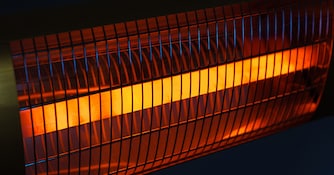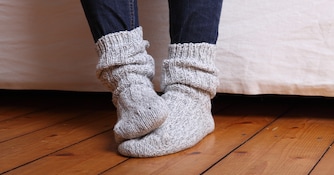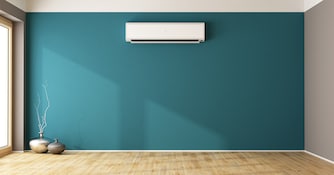
Mini Split Challenges in Frigid Cold Weather
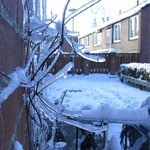 Temperature extremes inhibit a mini split system's ability to function effectively.
Temperature extremes inhibit a mini split system's ability to function effectively.
Extremely high and low outdoor temperatures make it difficult for an air conditioner to eject or absorb heat, resulting in a decline in both performance and efficiency.
Typically, this decline is not perceptible during hot summer months, but dramatic temperature drops can drastically affect a mini split's ability to heat and cool during winter months. Thankfully, there are many mini splits that work effectively in cold weather.
Mini Split Temperature Ranges
Many people ask how cold is too cold for a mini split to provide heat. It all depends on what type of mini split you get.
Low ambient mini splits are specially-designed to operate at very low temperatures. Many can run at 100 percent efficiency down to 0°F and at decreased efficiency down into the negatives. As a result, these can work in many cold climates for much of the year with needing any supplemental heat.
Mid-level mini splits run at 100 percent efficiency down to 20°F and typically require a base pan heater. These work well for heating moderate to cold climates.
Economy-level mini splits run at 100 percent efficiency down to 30°F and may shut off at temperatures below 20°F. These are best for moderate to warm climates.
Higher-Heat Mini Splits for Extreme Cold
If you live in an area that experiences frigid winters, you will definitely want to consider a heat pump mini split system for when the temperature dips below zero.
Look for the HSPF (Heating Seasonal Performance Factor) rating for each brand below to get an idea of the heating capabilities - the higher the HSPF, the better it will perform with greater efficiency. The two brands below offer great cold weather mini split solutions.
Outdoor Unit Installation in Cold Weather Areas
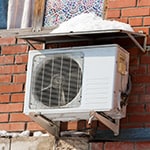 Where you install your outdoor condenser will greatly impact how well it operates in the winter.
Where you install your outdoor condenser will greatly impact how well it operates in the winter.
Proper spacing and positioning affect how well the air is circulated as it's drawn through the unit. Leaving enough room in the right areas will help prevent snow or ice from building up on the unit.
Placing the unit under an overhang or some sort of roof is a great way to shelter it from snow and ice. However, make sure that there's adequate clearance above the unit. Otherwise, it may not operate correctly.
It's also a best practice to elevate the unit so that it's high enough off the ground to stay above anticipated snowfall.
Improving Heating Function in Cold Climates
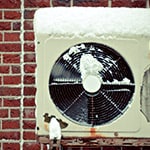 When running your mini split for heating purposes, it's normal for frost to build up on the outdoor coil.
When running your mini split for heating purposes, it's normal for frost to build up on the outdoor coil.
In order to remove the frost and maintain optimal performance of the mini-split, the condenser must periodically switch to a defrost mode. As the frost melts, it drips into a drain pan.
In extremely cold conditions, the dripping water may freeze before it has a chance to escape the drain pan. Over time, the buildup of ice can get thick enough to freeze the fan blades to the pan. Another problem that can occur is frozen water getting between the fins of the coil, expanding, and cracking it.
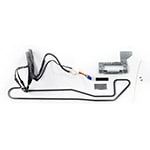 Repairs associated with ice build-up in a drain pan can cost as much as $1,000 or more. To prevent this kind of damage, it is strongly recommended to use a mini split drain pan heater for heating in areas that experience subfreezing temperatures.
Repairs associated with ice build-up in a drain pan can cost as much as $1,000 or more. To prevent this kind of damage, it is strongly recommended to use a mini split drain pan heater for heating in areas that experience subfreezing temperatures.
A drain pan heater rests in the drain pan and plugs directly into the control board of the outdoor condenser. The control board signals the heater to turn on automatically in conditions where freezing is likely.
This prevents water from freezing in the drain pan and protects the condenser from damage. Just keep in mind that drain pan heaters are specific to both brand and condenser model.
Improving Cooling Function in Cold Climates
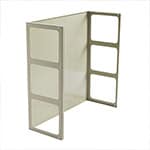 When you're relying on your mini split system to keep a server room or busy kitchen cool, it's critical that the system continues to run year round, even in extreme cold.
When you're relying on your mini split system to keep a server room or busy kitchen cool, it's critical that the system continues to run year round, even in extreme cold.
However, unless you've selected an appropriate system, you may experience issues with cold outside air moving too quickly over the coil, which could cause your system to fail altogether. Wind baffles can alleviate this problem by blocking wind from blowing through the condenser. This means the unit's fan can better control the air flow across the coil.
Be aware that only select units can be equipped with wind baffles, so if you're in a cold-weather region and rely on your mini split for year-round cooling, be sure to select a suitable condenser and the appropriate wind baffles. Wind baffles are specific to both the brand and model of the condenser.
Mini Split Buyer's Guide Navigation
Home | Inverter Technology | Efficiency | Dehumidification | Heat Pumps vs A/C | Winterizing | Single-Zone vs Multi-Zone | How To Zone | Indoor Units | Accessories | Find an Installer | Mini Split Sizing Calculator | System Builder


